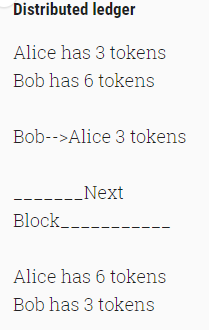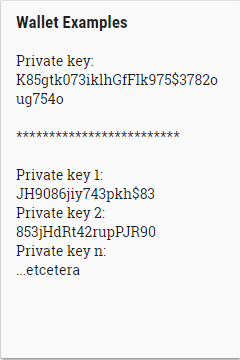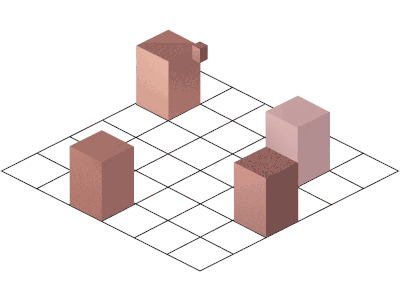FOAM: Smart Wallets, Smarter Space
In my introduction to FOAM, I went through the basics of how blockchain protocols work, and how basic crowdsourced geospatial systems have worked. The blockchain, invented by Satoshi Nakamoto, transformed the use of money through smart contracts and wallets. FOAM is taking the next step and transforming the use of space (through smart contracts and wallets).

In this article, I plan to revisit the basics of a blockchain wallet, what its purpose is, and then to dive into how the FOAM token (FT) will add information and value to a wallet and allow it to incorporate the Cartesian coordinate system.
What is a Token?
The word "token" conjures up a physical item that can be held, but it is just an analog for a protocol that is agreed upon by a network of computers around the world. As I mentioned in my last article, the Ethereum blockchain is a decentralized world computer that is unstoppable. It is designed to allow users to create tokens, which can then be sent between users and/or used for their specific application.
The most simple and direct use of tokens so far is crowdfunding. The terms "Initial Coin Offering" and "Token Generation Event" have been used to describe this. Selling tokens allows a startup the opportunity to distribute tokens to those willing to buy them, anticipating future use. This is similar to people joining a Kickstarter campaign with the hope of reaping a future consumer product, such as a digital song download. Instead of a song, however, the buyers receive tokens.
These tokens can then be used in a product that is usually still in development, with promise to be released later. Getting in early allows for a discount in expected cost of the product. I’ve used Golem and BAT as examples of products that use tokens, others include Digix and Augur. Over the past year there have been dozens of token sales for startups.
Because tokens are freely traded on exchanges worldwide, and have value, they can be said in some ways to be money. More on that later.
Smart Contracts and Wallets
Tokens are tracked on the ethereum blockchain, and held by users in either a wallet or smart contract. A wallet is simply an abstraction, just as a token is. If tokens are entries on a worldwide distributed ledger (in this case, the ethereum virtual machine), a wallet is simply another entry that proves ownership of certain tokens.

Here we see the state of a distributed ledger, and how it changes when tokens are transferred

This is now the ledger as the state changes once again, reflecting the updated ownership. This is replicated around the world simultaneously
Without getting into the math too deeply, a token owner transfers her tokens by using a sequence of numbers and letters called a private key. The private key is like a password; it must be secret to be effective. When a private key is shared onto the internet, a person's tokens are at risk of being moved by anyone with that private key. This is not to be confused with the public address of a token, which is a non secret string of letters and numbers that shows token ownership. In other words, we don’t see “Bob” and “Alice” listed on the blockchain, but pseudonymous addresses that show who owns what.
This is a big difference between banks and bitcoin/ethereum. With a bank, the amount of money in any given account is unknown except to the bank employees and the owner. With blockchain based cryptocurrencies such as bitcoin and ethereum, every accounts holdings are publicly inspectable, and it is up to the holder to decide if they want others to know which wallet(s) they own.
There are devices that resemble USB drives that can make storing a private key safe and simple. Even with these devices plugged into an internet connected computer, they keep the private key safe and cannot be tampered with.
As I mentioned above, wallets are an abstraction. A wallet can hold any number of private keys. A graphical representation allows the user to view what tokens are held by the wallet and make it simpler to use and trade them.

Just as you could write any amount of numbers in a document, a wallet can hold any number of keys

Conceptual wallet with FOAM tokens
From Tokens, to Wallets, to Smart Contracts
Now that we've gone over what a token does, and how it can be held in a wallet, let's discuss smart contracts. A smart contract allows people to make programmable tokens. Another way to say this is they can make code that manipulates money under their control, through the use of the blockchain.
Let’s use an example that many people are familiar with: real estate. There are generally five parties involved in a real estate sale: the buyer, the buyer’s agent, the seller, and the seller’s agent. There is also an escrow agent, who ensures that the money has been paid by the buyer before allowing the title to be transferred to the buyer. This takes a lot of time and expense, and makes home buying and selling more difficult.
A smart contract simplifies this. A good way to think of a smart contract is programmable money-it allows for if-then statements to used in transactions. For instance, “If $400,000 is deposited into this smart contract, then the title will be transferred to the sender”. This removes the escrow agent from the transaction and automates their job.
Now, FOAM
FOAM adds to space or location what “smart” adds to smart contracts . FOAM is a protocol that uses the FOAM Token (FT) to create a Crypto Spatial Coordinate (CSC).
A CSC is a smart contract with a physical location, created by a staked Foam Token (FT). This location is stationary, while Space Tokens can circulate. The CSC is trusted, with its information secured in the ethereum blockchain. CSC can use Space Tokens (ST) to allow for more complex transactions, examples of which will be in upcoming articles.
Just as the smart contract has revolutionized finance, with ICOs becoming a major attraction to capital, CSCs will revolutionize the way we interact with the world, as blockchain enabled locations become “smarter” and incentivize value creation. Just as money became easier to use with bitcoin (in essence combining the electronic usability of Visa with the store of value of cash), we’re going to see old problems solved in new and novel ways with FOAM.
The genius behind the FOAM smart contract is that it allows for value creation in a unique way we've never seen. I’ve already written about how OpenStreetMaps has an army of dedicated volunteers whose hobby is to input map information. Just as the internet brought a far richer layer to maps than they previously had, FOAM’s extra layer of information, conveying value, will create new interactions with new possibilities to OpenStreetMaps.

With FT, one can use smart contracts to develop a location by depositing tokens into the address, raise (or lower) the reputation of some places through voting, or increase data discovery through automated interactions of CSCs. FOAM is a deliberately broad protocol that upgrades users into enthusiasts and active participants who can discover even more interactions, just as iterations on blockchain technology have already scaled past the initial ideas put forth from Satoshi.
What’s Next
If you haven’t already done so, head on over to the FOAM website and subscribe to their newsletter. You’ll be the first to hear about what is happening next, as well as important dates, when they are made public.
*This article is the second in a series of active collaboration between the team and me. My voice and opinions remain independent
this was a very clear, detailed and informative article. I'm subscribing to the newsletter. Thanks, @protegeaa
Thanks John-clarity is one of my main concerns with my FOAM articles.
you're welcome .
This post has received a 0.52 % upvote from @drotto thanks to: @banjo.